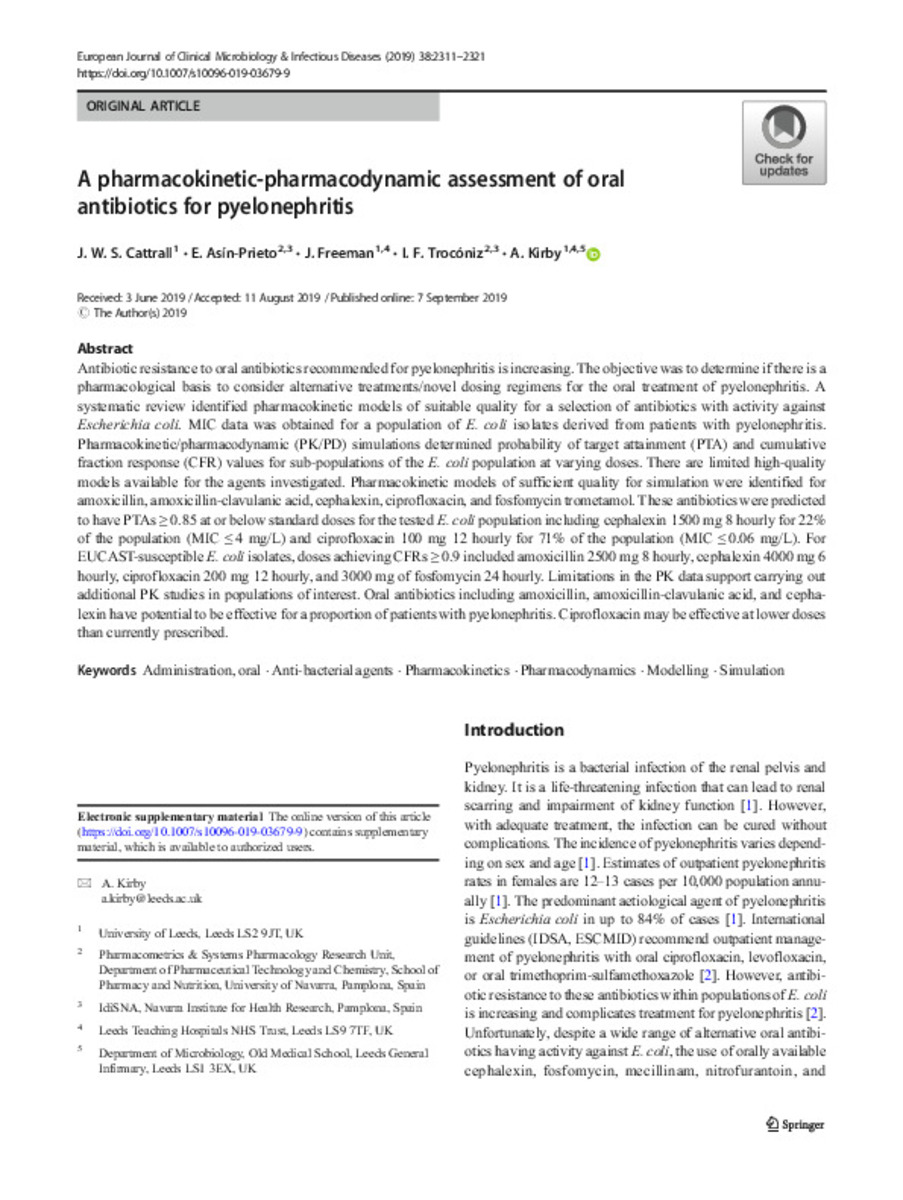A pharmacokinetic-pharmacodynamic assessment of oral antibiotics for pyelonephritis
Palabras clave :
Administration, oral
Anti-bacterial agents
Pharmacokinetics
Pharmacodynamics
Modelling
Simulation
Fecha de publicación :
2019
Editorial :
Springer Science and Business Media LLC
Nota:
This article is distributed under the terms of the Creative Commons Attribution 4.0 International License (http://creativecommons.org/licenses/by/4.0/), which permits unrestricted use, distribution, and reproduction in any medium, provided you give appropriate credit to the original author(s) and the source, provide a link to the Creative Commons license, and indicate if changes were made.
Cita:
Cattral, J.W.S. (J. W. S.); Asin, E. (E.); Freeman, J. (J.); et al. "A pharmacokinetic-pharmacodynamic assessment of oral antibiotics for pyelonephritis". European Journal of Clinical Microbiology & Infectious Diseases. 38, 2019, 2311 - 2321
Aparece en las colecciones:
Estadísticas e impacto
0 citas en

Los ítems de Dadun están protegidos por copyright, con todos los derechos reservados, a menos que se indique lo contrario.







